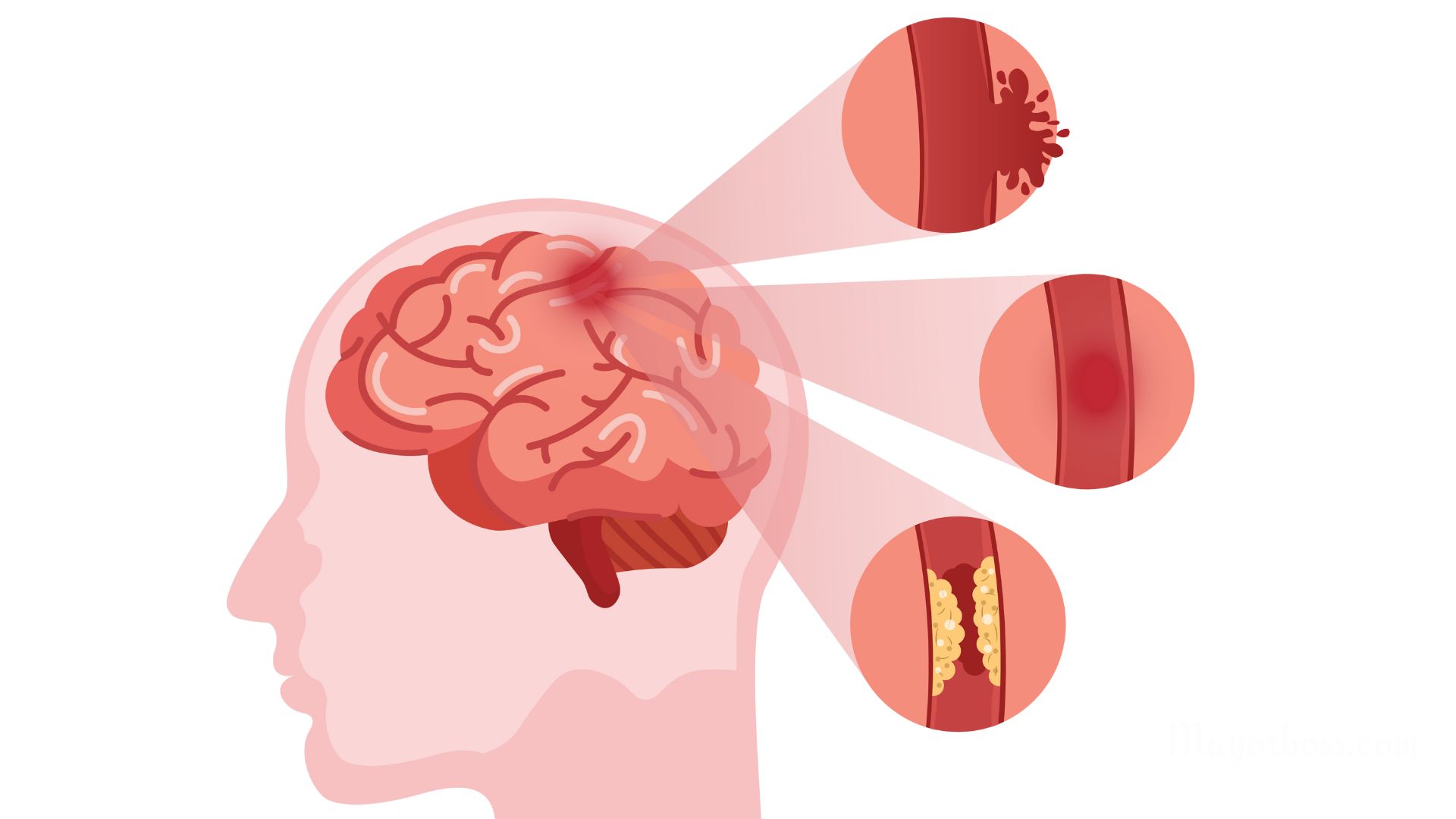What is a Hemorrhagic Stroke?
What is a Hemorrhagic Stroke? A hemorrhagic stroke happens when a blood vessel in the brain bursts, causing bleeding in and around the brain. Unlike an ischemic stroke, where a blockage stops blood flow, a hemorrhagic stroke is all about unwanted bleeding. This can be extremely dangerous and requires immediate medical attention.

Why Does a Hemorrhagic Stroke Occur?
When you have a hemorrhagic stroke, it’s usually because a blood vessel in your brain has burst. This can happen for several reasons:
High Blood Pressure
One of the main culprits behind a hemorrhagic stroke is high blood pressure. Over time, high blood pressure weakens blood vessels, making them more prone to bursting.
Brain Aneurysm
Another common reason is a brain aneurysm, a weak spot in a blood vessel that balloons out and can burst easily.
Blood-Thinning Medications
If you’re taking medications to thin your blood, you might also be at risk. These medications can make your blood less likely to clot, which is generally a good thing. However, they also make it easier for bleeding to occur.
How is it Different from Other Types of Stroke?
In the world of strokes, you generally deal with two main types: ischemic and hemorrhagic.
Ischemic Stroke
An ischemic stroke is more common and occurs when a blood clot blocks a vessel in the brain. No blood, no oxygen, and your brain cells start to die off.
Hemorrhagic Stroke
On the flip side, a hemorrhagic stroke involves a vessel actually breaking open. Instead of a lack of blood flow, you have too much—in the wrong places. This puts pressure on the brain and can cause a lot of damage.
Symptoms of Hemorrhagic Stroke
If you’re concerned about the possibility of a hemorrhagic stroke, there are a few symptoms that should prompt immediate medical attention:
Sudden Headache
A quick and severe headache can indicate that something’s wrong. It’s like an alarm bell for your body.
Vision Problems
Blurry or double vision are other signs. If your eyes aren’t working like they usually do, it could be a symptom of a stroke.
Physical Weakness
Feeling weak on one side of your body? This is a classic sign of a stroke. You might find it hard to lift things or even walk.
Confusion or Slurred Speech
If you’re feeling confused or notice that your words are slurring, don’t ignore it. These are also symptoms of a stroke.
How Do Doctors Diagnose and Treat It?
If you show up at the hospital with stroke symptoms, the medical team will jump into action right away.
Imaging Tests
Doctors often use CT scans or MRIs to get a good look at your brain. These images can show the bleeding and help doctors figure out the best plan.
Medications and Surgery
Depending on how severe the stroke is, you might need medications to lower your blood pressure or relieve brain swelling. Sometimes, surgery is necessary to remove the blood and relieve pressure.
Rehabilitation
After the immediate crisis is over, you’ll likely need physical therapy to regain lost skills. It’s a long road, but many people do make significant recoveries.
Prevention
In people with risk factors like high blood pressure or a history of aneurysms, taking preventive steps is crucial. This often involves medications to control blood pressure and regular check-ups to monitor any potential issues. A balanced diet rich in fruits and vegetables and low in saturated fats can also help in maintaining good vascular health. Exercise and lifestyle changes, like quitting smoking, can further lower your risk.
Frequently Asked Questions
At What Age Is the Risk of Hemorrhagic Stroke Increased?
Age is a significant factor when it comes to the risk of experiencing a hemorrhagic stroke. Although it can happen at any age, the risk generally increases as you get older. Specifically, people aged 65 and over are more susceptible. However, other factors like high blood pressure, lifestyle choices, and pre-existing medical conditions can make younger individuals prone to hemorrhagic strokes as well. So, age is one piece of the puzzle, but it’s crucial to consider the entire health picture.
What are the Main Causes of a Hemorrhagic Stroke?
High blood pressure is a major player in the occurrence of hemorrhagic strokes. It tends to weaken the walls of blood vessels over time, making them susceptible to rupture. Aneurysms, which are balloon-like bulges in blood vessels, also pose a risk. Additionally, medications designed to thin the blood can contribute to a higher likelihood of these types of strokes.
How Does a Hemorrhagic Stroke Differ from an Ischemic Stroke?
While both are forms of strokes, they come about for different reasons. An ischemic stroke happens when a blood clot blocks a vessel in your brain, preventing blood from reaching certain areas. In contrast, a hemorrhagic stroke is caused by a blood vessel in the brain rupturing, leading to bleeding. This bleeding puts pressure on the brain and may result in significant damage.
What Symptoms Should Alert Me to a Possible Hemorrhagic Stroke?
Be on the lookout for a sudden, intense headache. This is often a key warning sign. Vision problems like blurriness or double vision shouldn’t be ignored either. Physical weakness, especially on one side of your body, and confusion or slurred speech are also major red flags that should prompt immediate medical attention.
What Steps Do Doctors Take to Diagnose and Treat a Hemorrhagic Stroke?
Upon arrival at the hospital, immediate action is taken. Imaging tests like CT scans or MRIs are often used to visualize the brain and locate the bleeding. Treatment may include medications to control blood pressure or relieve brain swelling. In more severe cases, surgery may be necessary to remove pooled blood and reduce pressure on the brain. Rehabilitation, including physical therapy, is often required after the initial crisis has been managed.
Further Reading: Symptoms Of Mini Stroke
